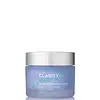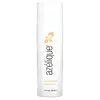What's inside
What's inside
 Key Ingredients
Key Ingredients

 Benefits
Benefits

 Concerns
Concerns

 Ingredients Side-by-side
Ingredients Side-by-side

Aloe Barbadensis Leaf Juice
Skin ConditioningCarthamus Tinctorius Seed Oil
MaskingStearic Acid
CleansingCetyl Alcohol
EmollientDimethicone
EmollientAlgin
MaskingHumulus Lupulus Extract
AntimicrobialRosmarinus Officinalis Leaf Extract
AntimicrobialSponge Extract
AntioxidantCorylus Avellana Seed Oil
EmollientTriticum Vulgare Germ Oil
EmollientPhenoxyethanol
PreservativeSodium Hyaluronate
HumectantSodium PCA
HumectantEthanolamine
BufferingPersea Gratissima Oil
Skin ConditioningAzulene
Skin ConditioningTocopheryl Acetate
AntioxidantRetinyl Palmitate
Skin ConditioningAscorbyl Palmitate
AntioxidantPanthenol
Skin ConditioningPanax Ginseng Root Extract
EmollientAllantoin
Skin ConditioningPotassium Sorbate
PreservativeSodium Benzoate
MaskingCitric Acid
BufferingAloe Barbadensis Leaf Juice, Carthamus Tinctorius Seed Oil, Stearic Acid, Cetyl Alcohol, Dimethicone, Algin, Humulus Lupulus Extract, Rosmarinus Officinalis Leaf Extract, Sponge Extract, Corylus Avellana Seed Oil, Triticum Vulgare Germ Oil, Phenoxyethanol, Sodium Hyaluronate, Sodium PCA, Ethanolamine, Persea Gratissima Oil, Azulene, Tocopheryl Acetate, Retinyl Palmitate, Ascorbyl Palmitate, Panthenol, Panax Ginseng Root Extract, Allantoin, Potassium Sorbate, Sodium Benzoate, Citric Acid
Water
Skin ConditioningCarthamus Tinctorius Seed Oil
MaskingGlycerin
HumectantGlyceryl Stearate
EmollientCetyl Alcohol
EmollientStearic Acid
CleansingPotassium Azeloyl Diglycinate
Skin ConditioningGlyceryl Stearate Se
EmulsifyingPolysorbate 60
EmulsifyingAllantoin
Skin ConditioningPotassium Sorbate
PreservativeTocopheryl Acetate
AntioxidantDimethicone
EmollientGlyceryl Stearate Citrate
EmollientVitis Vinifera Seed Oil
EmollientCetearyl Glucoside
EmulsifyingCetearyl Alcohol
EmollientSodium Hyaluronate
HumectantAcetyl Hexapeptide-8
HumectantHydroxypropyl Cyclodextrin
MaskingPalmitoyl Tripeptide-38
Skin ConditioningGlycolic Acid
BufferingHamamelis Virginiana Extract
AntiseborrhoeicCaffeine
Skin ConditioningSodium Ascorbyl Phosphate
AntioxidantRetinyl Palmitate
Skin ConditioningUbiquinone
AntioxidantCamellia Sinensis Leaf Extract
AntimicrobialOlea Europaea Fruit Oil
MaskingEuterpe Oleracea Fruit Extract
Punica Granatum Seed Oil
EmollientVaccinium Myrtillus Bud Extract
AntioxidantRosa Canina Fruit Extract
AstringentEpilobium Angustifolium Extract
Skin ConditioningPichia/Resveratrol Ferment Extract
Skin ConditioningEthylhexylglycerin
Skin ConditioningPhenoxyethanol
PreservativeParfum
MaskingWater, Carthamus Tinctorius Seed Oil, Glycerin, Glyceryl Stearate, Cetyl Alcohol, Stearic Acid, Potassium Azeloyl Diglycinate, Glyceryl Stearate Se, Polysorbate 60, Allantoin, Potassium Sorbate, Tocopheryl Acetate, Dimethicone, Glyceryl Stearate Citrate, Vitis Vinifera Seed Oil, Cetearyl Glucoside, Cetearyl Alcohol, Sodium Hyaluronate, Acetyl Hexapeptide-8, Hydroxypropyl Cyclodextrin, Palmitoyl Tripeptide-38, Glycolic Acid, Hamamelis Virginiana Extract, Caffeine, Sodium Ascorbyl Phosphate, Retinyl Palmitate, Ubiquinone, Camellia Sinensis Leaf Extract, Olea Europaea Fruit Oil, Euterpe Oleracea Fruit Extract, Punica Granatum Seed Oil, Vaccinium Myrtillus Bud Extract, Rosa Canina Fruit Extract, Epilobium Angustifolium Extract, Pichia/Resveratrol Ferment Extract, Ethylhexylglycerin, Phenoxyethanol, Parfum
Ingredients Explained
These ingredients are found in both products.
Ingredients higher up in an ingredient list are typically present in a larger amount.
Allantoin is a soothing ingredient known for its protective and moisturizingg properties. Because of this, it is often added to products with strong active ingredients.
Studies show higher concentrations of this ingredient can promote wound healing.
Though it can be derived from the comfrey plant, allantoin is produced synthetically for cosmetic products to ensure purity.
Learn more about AllantoinCarthamus tinctorius seed oil comes from safflower, one of humanity's oldest crops.
Safflower seed oil contains a high percentage of linoleic acid and oleic acid. It also contains Vitamin E. These three components are effective moisturizers.
Vitamin E helps nourish your skin's lipid barrier. It is also a potent antioxidant. Antioxidants help fight free-radical molecules, or unstable molecules that may damage your skin cells.
Due to its high fatty acid content, this ingredient may not be malassezia folliculitis safe.
Thoughout history, safflower has been used for dying fabrics and in food as a saffron substitute.
Learn more about Carthamus Tinctorius Seed OilCetyl Alcohol is a fatty alcohol. Fatty Alcohols are most often used as an emollient or to thicken a product.
Its main roles are:
Though it has "alcohol" in the name, it is not related to denatured alcohol or ethyl alcohol.
The FDA allows products labeled "alcohol-free" to have fatty alcohols.
Learn more about Cetyl AlcoholDimethicone is a type of synthetic silicone created from natural materials such as quartz.
What it does:
Dimethicone comes in different viscosities:
Depending on the viscosity, dimethicone has different properties.
Ingredients lists don't always show which type is used, so we recommend reaching out to the brand if you have questions about the viscosity.
This ingredient is unlikely to cause irritation because it does not get absorbed into skin. However, people with silicone allergies should be careful about using this ingredient.
Note: Dimethicone may contribute to pilling. This is because it is not oil or water soluble, so pilling may occur when layered with products. When mixed with heavy oils in a formula, the outcome is also quite greasy.
Learn more about DimethiconePhenoxyethanol is a preservative that has germicide, antimicrobial, and aromatic properties. Studies show that phenoxyethanol can prevent microbial growth. By itself, it has a scent that is similar to that of a rose.
It's often used in formulations along with Caprylyl Glycol to preserve the shelf life of products.
Potassium Sorbate is a preservative used to prevent yeast and mold in products. It is commonly found in both cosmetic and food products.
This ingredient comes from potassium salt derived from sorbic acid. Sorbic acid is a natural antibiotic and effective against fungus.
Both potassium sorbate and sorbic acid can be found in baked goods, cheeses, dried meats, dried fruit, ice cream, pickles, wine, yogurt, and more.
You'll often find this ingredient used with other preservatives.
Learn more about Potassium SorbateRetinyl palmitate is a form of retinoid. Retinoids are the superstar class of anti-aging ingredients that include tretinoin and retinol.
This particular ingredient has had a bumpy year with its rise and fall in popularity.
First, Retinyl palmitate is created from palmitic acid and retinol. It is a retinol ester and considered one of the weaker forms of retinoid.
This is because all retinoids have to be converted to Tretinoin, AKA retinoic acid. Retinyl Palmitate is pretty far down the line and has to go through multiple conversions before its effects are seen.
Due to this long and ineffective conversion line, the benefits of Retinyl Palmitate are debated.
Studies show Retinyl Palmitate to help:
Dermatologists say this ingredient is ineffective because it isn't used in high enough concentrations in cosmetics.
This ingredient used to be found in sunscreens to boost the efficacy of sunscreen filters.
The downfall of Retinyl Palmitate was due to released reports about the ingredient being correlated to sun damage and skin tumors.
While there is a study showing this ingredient to cause DNA damage when exposed to UV-A, there is no concrete proof of it being linked to skin cancer. It is safe to use when used correctly.
All retinoids increase your skin's sensitivity to the sun in the first few months of usage. Be especially careful with reapplying sunscreen when using any form of retinoid.
Currently, this ingredient is still allowed in cosmetics all over the world. In Canada, cosmetics must have a warning label stating the product to contain Retinyl Palmitate
Fun fact: This ingredient is often added to low-fat milk to increase the levels of Vitamin A.
Learn more about Retinyl PalmitateSodium Hyaluronate is hyaluronic acid's salt form. It is commonly derived from the sodium salt of hyaluronic acid.
Like hyaluronic acid, it is great at holding water and acts as a humectant. This makes it a great skin hydrating ingredient.
Sodium Hyaluronate is naturally occurring in our bodies and is mostly found in eye fluid and joints.
These are some other common types of Hyaluronic Acid:
Learn more about Sodium HyaluronateStearic Acid is a fatty acid. It is an emollient, emulsifier, and texture enhancer.
As an emollient, stearic acid helps soften skin. It aids the skin's protective barrier by preventing water loss. It also provides a gentle cleansing effect without stripping away natural oils.
Stearic acid may also be used to enhance the texture of products. It can add volume and stabilize ingredients such as water and oil. This can help water and oil ingredients from separating.
Sources of stearic acid include animal or vegetable fats/oils such as coconut or shea. It can be naturally found in butter, cocoa butter, shea butter, vegetable fats, and animal tallow.
This ingredient may not be Malassezia folliculitis, or fungal-acne safe.
Learn more about Stearic AcidTocopheryl Acetate is AKA Vitamin E. It is an antioxidant and protects your skin from free radicals. Free radicals damage the skin by breaking down collagen.
One study found using Tocopheryl Acetate with Vitamin C decreased the number of sunburned cells.
Tocopheryl Acetate is commonly found in both skincare and dietary supplements.
Learn more about Tocopheryl Acetate